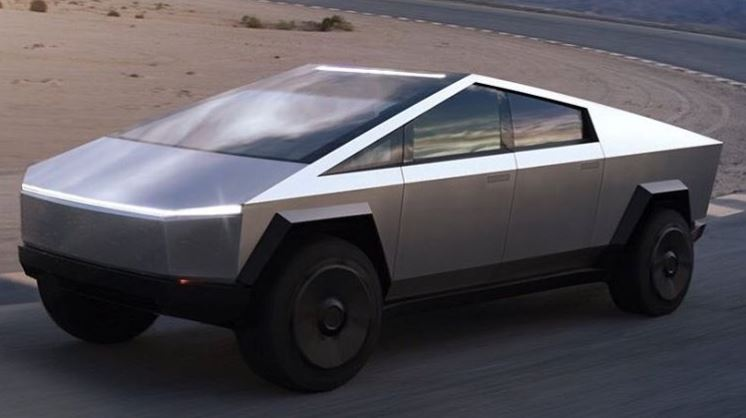
IMAGE CREDIT: @teslamotors
The unveiling of Tesla’s Cybertruck didn’t go quite as planned. Its look was widely mocked, and its purportedly “unbreakable” windows broke. Despite this debacle, electric vehicles figure to remain popular thanks to improvements in battery technology, the lower cost of lithium-ion cells, and the development of more wireless charging facilities.
The continuous rise of electric vehicles is also offering a glimpse of what automotive customization could look like in the future. Fiat’s all-electric Centoventi, a concept car Fiat unveiled at the Geneva Motor Show is a prime example. The Verge notes how the Centovini is fully customizable, with customers buying a “very plain car” and having options to “dress it up” according to their liking. Customers, for example, can choose from a variety of roofs, bumpers, and wheel covers. They can also choose from 114 accessories — seat cushions, bottle holders, and sound systems, among others — offered by Mopar. There are even options to buy or rent a bigger battery pack. These offerings, sans the battery upgrades, are similar to the upgrades we offer in our Tesla modifications, where we redesign the interior, enhance the entertainment
system, and provide custom lighting.
Volkswagen’s I.D. Buzz, meanwhile, will have a fully customizable interior, with seats that can be moved and rotated. It seems a mundane change, but it is one that makes it easier to set up the vehicle’s interior. Both the Centoventi and I.D. Buzz offer new approaches to customization, with the former modifications available upon purchase and the latter encouraging customization through its design. Granted these are two models only, but there is a strong likelihood that manufacturers like Tesla will make similar customization-friendly electric vehicles, especially given the growing popularity of battery-powered cars.
Countries are going electric
Countries around the world are going electric. But the king of electric car adoption is Norway, where 48.8% of all new cars sold from January to June 2019 were electric. The country wants to end the sale of diesel and petrol engines by 2025. It is making considerable headway in this regard by incentivizing the purchase of battery-powered vehicles, which are exempt from heavy taxation and automatically qualify for
road toll discounts.
Electric cars are becoming popular in other countries, too. Notably there is now a robust market for electric vehicles in China. A South China Morning Post report on China’s electric car market details how sales of electric vehicles in the Mainland have risen in the last few years. Sales for 2018 were estimated to breach 1 million, a marked increase from the approximately 777,000 units sold in 2017 and the half a million units sold in 2016. And China’s domestic car makers are taking note, as they unveiled 124 models of new energy vehicles at the 2018 Beijing Auto Show.
Battery-powered cars are seeing increasing adoption even in developing countries. Electric cars are starting to break ground in the Philippines, a country with over 10.4 million vehicles and a penchant for automotive customization — just look at the iconic Filipino jeepney and tricycle. Now, with the government pushing for public transportation modernization, the Electric Vehicle Association of the Philippines and Department of Energy have rolled out electric versions of both. And more are likely to come. That’s because the Philippines’ Department of Transportation (DoT) wants to have at least 20,000 electric jeepneys on the road in the next 6 years.
With countries worldwide looking to go electric, more electric vehicles will be seen on the world’s roads in the near future. As more people purchase electric vehicles, so too will the demand for customization increase.
exclusively written for apexcustoms.com By Elodie Cunning
